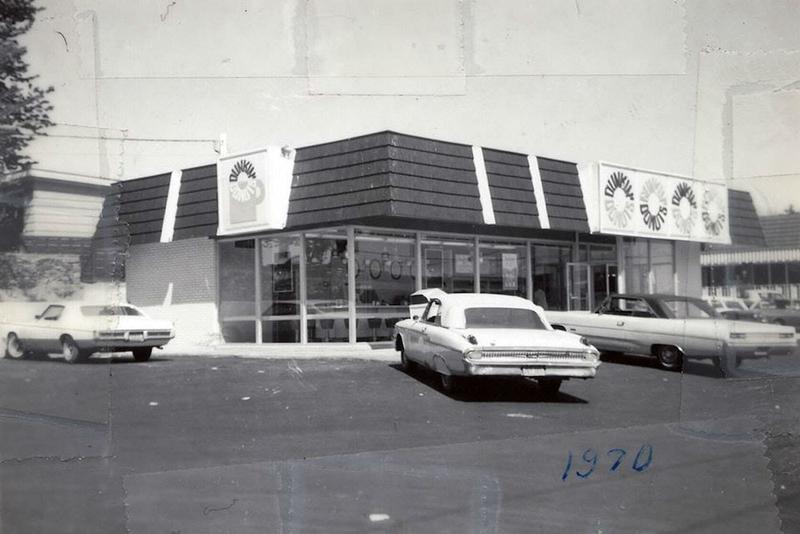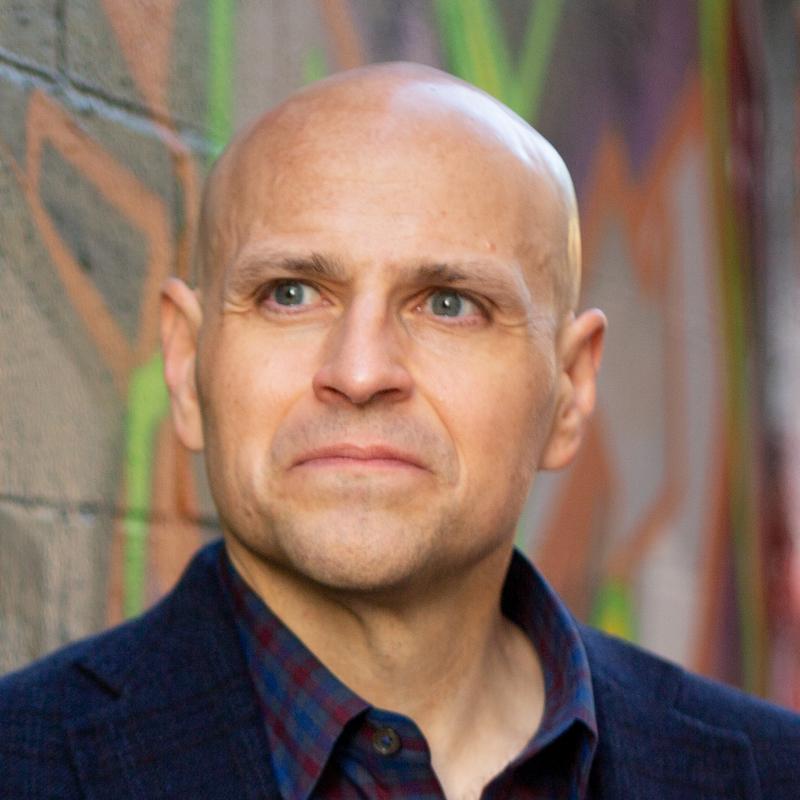
Iturned fifty earlier this year. The thing about getting older that nobody warns you about is that you always feel like you’re the youngest person in the room until suddenly you’re the oldest. There’s never a noticeable moment where you look around and think, “huh, my age is about average.” You’re the kid, and then you’re old.
At some point, about twenty years ago, I moved from engineering to product management. The exact moment is hazy and speaks to how little foresight and deliberation went into my career. I wanted to be closer to the business, so I started doing less and less engineering, and sure enough, I was a product manager. The actual title followed later. (I hedged for a bit, unsure if I was ready to make that leap.)
There was no grandeur to product management in those days. The glory was in engineering, and moving out of engineering was viewed as a career-limiting decision. There was engineering and “business,” which is what we called everyone who wasn’t an engineer in those days.
Times have certainly changed. Product management is now an aspiration for thousands of people just starting their careers. Everyone, it seems, wants to be a PM. And that’s terrific. But with popularity comes noise, and with the noise comes terrible advice, and with the lousy advice come the promises of easy shortcuts and snake oil.
A few weeks ago, I spoke at INDUSTRY: The Product Conference about the lessons I’ve learned that might be useful for other product leaders. I offer this advice with full recognition that I’m usually the first to argue that advice can be problematic. So please take it for what it is: one person’s opinion.
The “art” of product management matters more than the “science” over the long term. In product management, there’s an art and a science. The science is all of the stuff you read about: managing a backlog, writing a PRD, KPIs, marketplace dynamics, growth metrics, analytical thinking, the latest agile whatever. The “art” gets dismissed as soft skills: communicating, empathy, leading without authority, having difficult conversations, storytelling, making decisions when you don’t have all the information, dealing with ambiguity, inspiring others, and connecting deeply to customers and their problems. The thing is, science gets more attention because it’s easier to understand, and therefore better for hustling boot camps and selling software tools. This trend is troublesome because it implies there’s one “right way” to do product management, and all you need to do is learn the technique or buy the right tool, and you can pass the interview, get the job, and win. If you’ve ever read anything I’ve written, you know I’m far more interested in the art than the science. When PMs fail, it’s usually because of the art. The most important thing you can do early in your career is grow these skills. Don’t let them be dismissed as “soft skills,” don’t get lured by the promise of tactics and techniques: they’re essential, but the craft depends more on the art over the long term.
Fall in love with problems, not solutions. As a PM, it’s easy to see a problem and snap to a solution. That’s what product management is, after all. But if rather than falling in love with the solution, you learn to love problems, you’ll find a steady stream of opportunities for innovation. Even better, you’ll be open-minded and let the problem guide your solution.
Bet on trends. I’ve been a part of and benefited from massive technical trends during my career. I graduated from college mere weeks after the first version of Mosaic was released to the world, and the web propelled the early part of my career. Betting on the right trend is like strapping yourself to a rocket ship.
It’s easier to get into product management inside a company than between them. It’s a challenge to get that first job. It’s hard because you can only learn PM’ing by doing the job, by apprenticing. And companies don’t want to take the risk on you if you haven’t shown you can do it. It’s much easier to move to the role from an adjacent function, like engineering, marketing, or business analysis. Everyone knows you’re skilled, they’re far more likely to take a chance on you and might welcome people pitching in in new ways. If you want to become a PM, look for ways to start PM’ing in your current role.
Write your resume in ten years. Where do you want to be? Think forward, imagine you have that job. What’s it like? What do you love about it? Too often we dream about where we want to end up, but not what it will be like when we get there. And here’s the critical part: imagine doing the job. Will you like it? Will it bring you fulfillment? If your goal is to be a CEO in 10 years, what will that be like? Do you think you will truly enjoy this job, or do you want it because everyone says you should want it? Write your resume in 10 years, and revisit it frequently.
Prioritize brand and growth, especially early in your career. When you’re a part of a successful high-growth company, you’ll have people around you to learn from. You’ll get to experience tremendous growth and scale. For this, you’ll receive disproportionate credit later in your career. The brand halo will lead to more opportunities and more success.
Don’t let gaps form between you and your customers and between you and the builders. I used to race bikes, and one of the things you learn in cycling is “don’t get gapped.” If there was one rule of bike racing, that’s probably it. Don’t let a gap form between you and the riders in front, or you’ll get dropped. The PM equivalent of this is to never let a gap form between you and your customers, or between you and the builders — the engineers and product designers who are building the product. I’m wary of trends to segment product management across different subspecialties because they often result in new layers forming between these two crucial constituencies (the “product owner” trend is probably the most egregious example of this). If you let a gap open up between you and the customer or you and the builders, you’re not going to be able to do the job.
People matter most. Choose teams, projects, and companies based on the people. A bad team can kill a great product, and I’ve seen weird things succeed through pure force of will and creativity of the team. Your boss matters too. It’s been said that people don’t leave bad jobs, they leave bad bosses. This is certainly true, and a terrible manager is devastating, especially early in your career. But people often overlook the corollary: an incredible boss is orders of magnitude better than a mediocre one. So early in your career, especially, try to find a great manager: a strong product leader who can teach you product, who has your back, and who is truly invested in your career.
Get a coach. This one will seem tremendously self-serving since I’m now a coach, so I apologize for that. I promise this isn’t a sales pitch. A great coach can partner with you on what matters most: your values, your vision for the future, your purpose, what you truly want, the perspective you take, how you make choices, what authentic leadership means to you, overcoming imposter syndrome, and finding meaning in your career and your life. Connecting to this is like a north star for how you live your life and guide your career, the same way a strong vision can guide a team to winning products. You wouldn’t start building a product without a vision, so why not have one for yourself? I wish I’d tapped into coaching much earlier. I would have been more deliberate about finding fulfillment, recognizing who I wanted to be, and making decisions in resonance with who I truly am. But I eventually found coaching, and it changed everything. So much that I decided this would be the next step in my career. Get a coach; it’s never too early. If you’re in a position of authority, get your company to sponsor coaching for everyone on your team.
Hold the door open behind you. As a white man, I’ve benefited from a lot of privilege. That doesn’t mean things were always easy for me or that I didn’t work hard. It’s tempting for someone like me to look at doors that might have been closed to me and point to others even more privileged for whom they were held wide open with a red carpet. But for every closed door I had to open, I must acknowledge that to someone who didn’t look like me, that same door was not only closed but locked and barred. The future depends on the tech industry becoming more diverse and inclusive. If we’re going to build products for the world, our teams need to look like the world. Diverse teams build better products. If you’re like me and have benefited in your career, hold the door open behind you. Build cultures of inclusion, listen to people who don’t look like you, be an ally, be willing to be vulnerable and uncomfortable, and build diverse teams. Sponsor — don’t just mentor — PMs from underrepresented backgrounds. Sponsoring is active and involves opening doors for others.
Here’s to the next twenty years.
Here is the full video of my talk:
